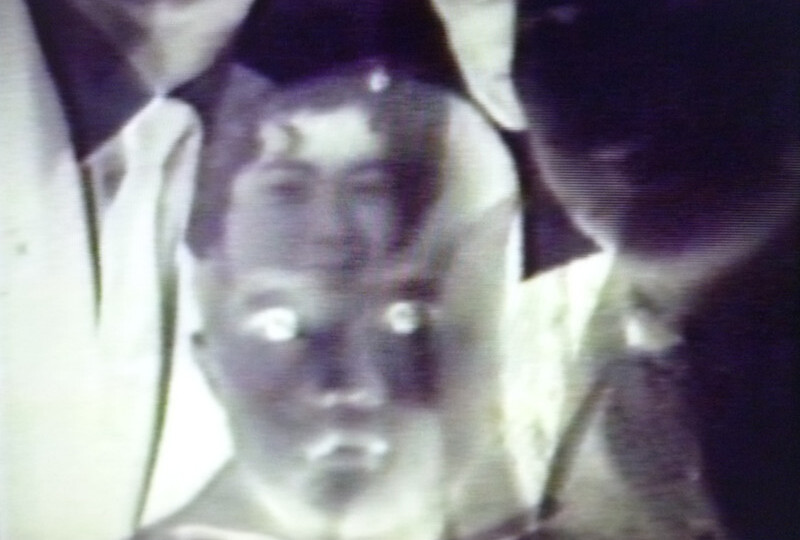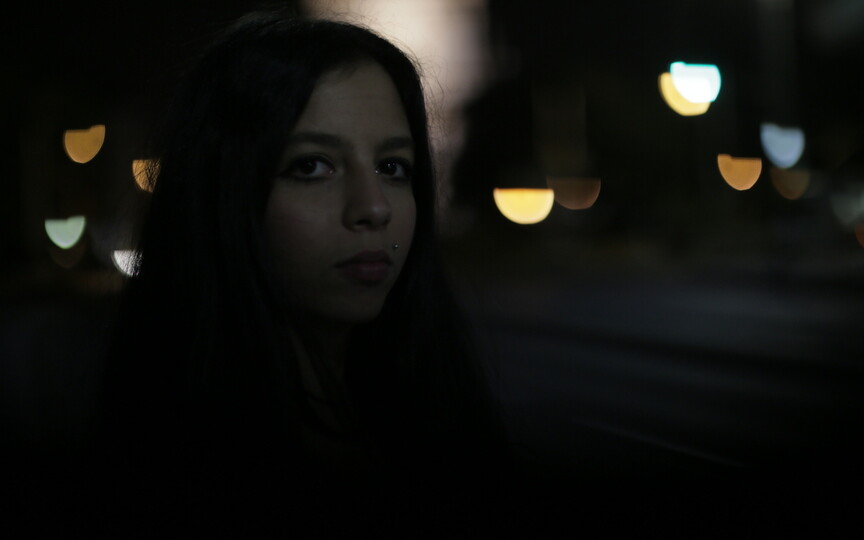Films as Patterns
For more than ten years, Martin Ježek has been making structural films – works that contemplate on the cinematic expression and meaning providing exceptional audio and visual experience. Ježek ranks among the foremost figures on the Czech experimental film scene. The topics he addresses in his films arise from his intellectual background and his broad cultural interests. The poetics of his works stems out of his approach to the material, the act of shooting and developing his films as well as the film screenings. Ježek’s precise approach to experimenting is characterised by his ultimately cinematic language and aesthetics. As a conductor on international express trains, Ježek transfers bags with 8mm or 16mm film reels and composes his films on the backdrop of a passing night landscape.
Your film A House Far Away was made in 2003 based on the novel of the same name by Věra Linhartová. Although this experimental literary form, structure and language employed by Linhartová is, indeed, impossible to make into a film, you managed to produce an original visual response to the novel. How does your film and its structure relate to the literary work?
I read the book again and again. The people who’d read it were telling me: There’s no point in trying to visualise Linhartová’s novel, there is no visual image behind the text. However, they all clung to the idea of what a standard film should look like. But the means that I wanted to employ in my film and that can be discovered when delving deeper into the text, stemmed from its structure, and not from a specific image behind it. I believed that when she was writing the book, she even had a page layout of the text in her mind, including the numbers of characters.
What was then your basic concept?
I started by telling myself that as a concretist, I should approach A House Far Away as something that does not exist, something to be set aside. And yet I needed to start from a specific point. And this starting point was the town of Most, this “house far away”, which does not exist, or the hole that has been left after mining and that started to appear at the time when she was writing the book, in the sixties. Then I decided on the length of the film – how many metres and how much material we would need, and how it would subsequently be reduced. With its co-author, Jakub Halousek, we specified the time period within which the film was to be shot and the route we’d take in the shape of a spiral winding around the town and the quarry holes.
We followed the route set out on our “map” and read Linhartová aloud. One hundred steps corresponded to one paragraph. Each time we stopped, I read the particular part aloud and each of us made one shot. In this manner, we collected all of the material over the period of approximately one year, and I subsequently sorted it out before even watching it. We were using exclusively the Super8 format, which then required a quantitative reduction to the 16 mm format.
During the shooting and the postproduction of A House Far Away I wanted to use specific methods of work with my own consciousness, to “eliminate” my consciousness as much as possible – and thus I experimented with various drugs. I believe that this may as well be considered a part of my method. When using drugs, I also took a systematic approach – and besides, the steps that followed were entirely sober.
What was your editing concept?
I cut the reduced 16mm material into one-metre-long pieces, put them into a black plastic bag and took them to an editing room in Barrandov where they edit negative material, and asked them to pull it off for me. They wanted to know how so I told them: It’s easy, just reach into the bag and the shot you take out will be the first shot in the film, then take out the second one, etc.
The film’s running time is 27 minutes. My edition of the book has 20 pages, and when read in one breath, each page takes approx. a minute and fifteen seconds to read. The whole piece can be read in those twenty-seven minutes, some viewers even tried to manage it during the screening. The number of the frames corresponds with the number of the characters in the text. I distributed the quotations from the text in the film accordingly.
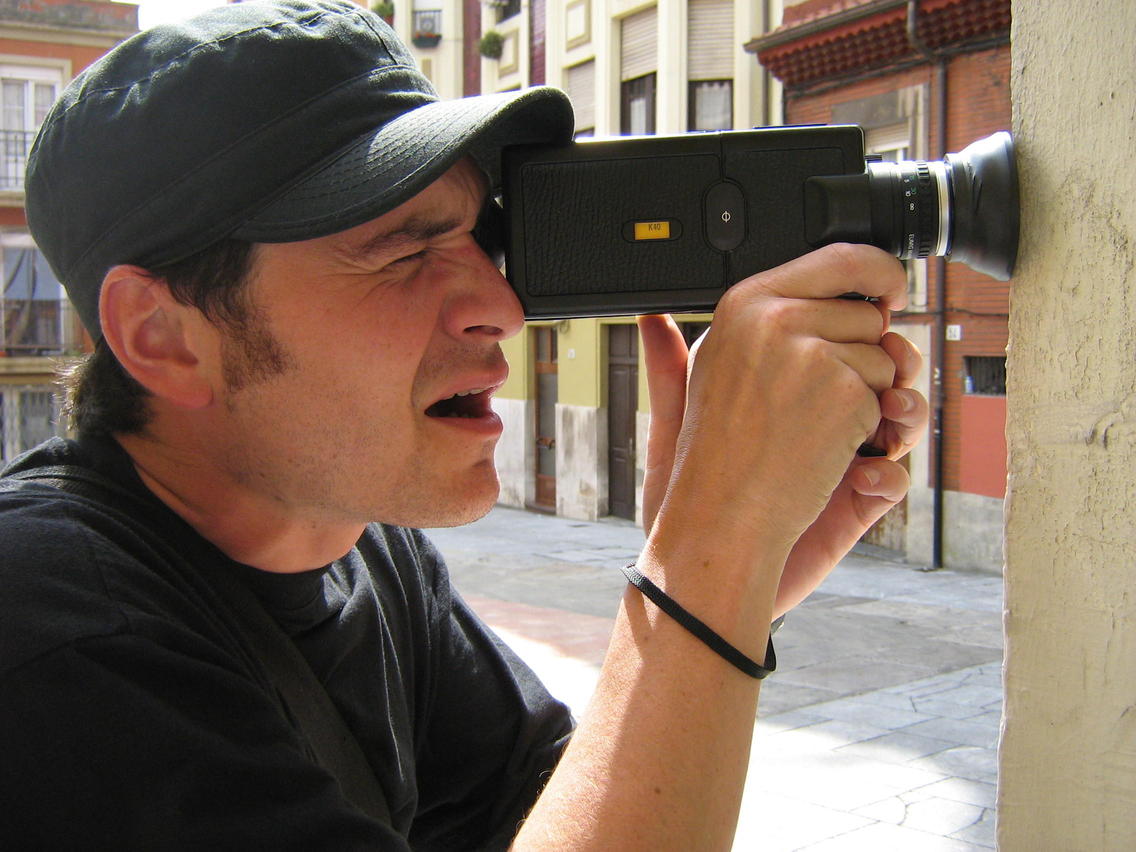
Martin Ježek
Found footage made on order
Some of your films work with someone else’s footage. Do you treat this material as found footage or do you make its source present or thematise its source in the film?
I see it as found footage which I can use in any way I choose. Of course, I don’t pretend not to anything about its history. I have the material produced by someone else, and I always ask some interesting person to shoot it for me.
Was this, for instance, the case of Fire Sport II, a film which was presented at last year’s Jihlava IDFF? You instructed a group of filmmakers to shoot footage about fire drills...
They were only told to shoot within the area where a fire-fighting sports competition was held. Then we sorted out the material with Honza Daňhel according to a gender-specific key: each of us worked with an equal number of shots made by women, and shots made by men. The original concept was to use the left projector to show images captured by women, and the right one to present footage made by men. The film is supposed to work as a sort of a gender pun.
How was the material edited in the end?
I cut the material into one-metre, half-a-metre and an eighth-of-a-metre-long shots... Or in music terms: a note, a half note, a quarter note, and an eighth note. I subsequently arranged the pieces according to a mathematical formula so that the lengths as well as the shots made by the individual authors alternated, yet maintaining the chronological order of the original material.
Honza took a different approach – an intuitive and a traditional one. He first watched the whole material in the projector and took notes. Then he made the dramatic composition. Finally, we juxtaposed our works. One time section shows a structural film and the other represents a sort of a reportage.
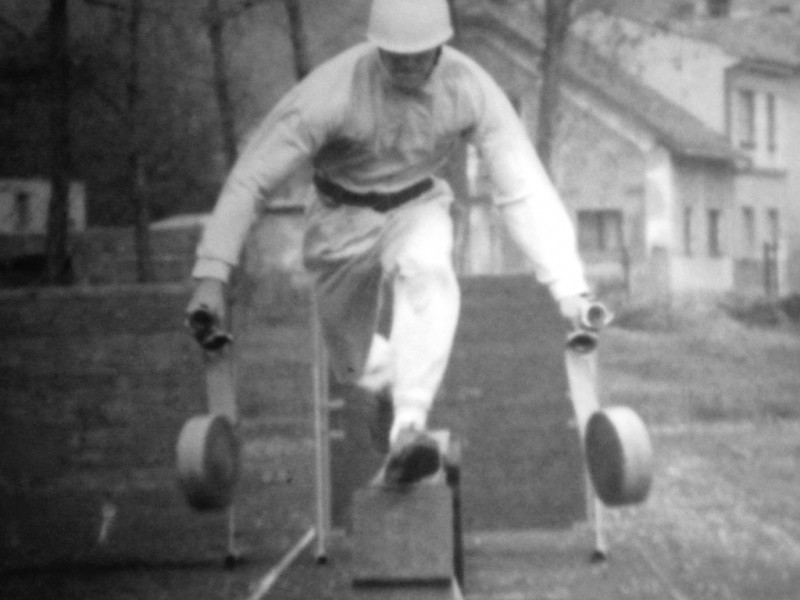
Fire Sport II
Inner pilgrimage
On the other hand, The Way of the Cross, which was completed shortly before your film about the fire drills, is a very personal work, thematising faith, or one’s journey to faith. What was your vision of the film before you started shooting?
I wanted the film to attest to my relationship to a particular place. The fourteen Stations of the Cross speak to anyone who is open and wants to be spoken to, but their power usually lies in the story they convey, the situations they refer to, which are read in symbolic terms. However, I am not interested in these connotations.
Right from the very start, I knew that I would be using my camera in the nature, outdoors. I found two Ways of the Cross in the borderland region and agreed with Jakub Halousek that each of us will shoot at one location, based on a rough scenario.
What exactly did you and Jakub agree on?
I only told him: the Way of the Cross outdoors – and you know me and know what I mean. I told him to read a text that I’d found in some church. An old and soiled piece of paper that I’d found, typewritten by a parish priest and including an interpretation of the Way of the Cross, which was probably to be distributed among the parishioners. No subtle meanings or contemplations, but a furious, lamenting speech. Death, death and only death is all that awaits us… And the Lord, the Lord who was stabbed and hurt.
Was this the only text you worked with?
An important source of inspiration were also texts by Léon Bloy. He referred to Jesus Christ as the greatest Jew in history. At his time, he was an inconvenient figure, hated by the clerics. His interpretation of the Way of the Cross served as a source of contemplation about its true meaning. He believed that everyone has to find a personal relationship to the Way of the Cross and set out on an inner pilgrimage. The Way of the Cross is a pilgrimage that ends with suffering which is supposed to liberate us. I can testify about my personal struggle, my personal conversion, whatever form it may take. And this thought was inspired by Bloy.
The aspect of testimony plays a very important role in the film. What was your approach to the shooting?
The basic principle is fourteen visits, fourteen stations and fourteen ways of treating bodily nature that lead to a modified perception of light. And this aspect is highly important because the entire film is, in fact, about light. During each of my fourteen visits, I employed a certain method of asceticism. For instance, I had just finished a strenuous shift on the train and hadn’t slept for two days. Or I was fasting. One day, I decided to go without drinking, etc. In almost all cases I set out on a pilgrimage for 50 km on foot, through snowdrifts in winter. Sometimes I started my pilgrimage at night. This extreme physical strain or asceticism always changes the way we see or, above all, the way we perceive light. The Way of the Cross is carved into stones on a hill, and the light and the clouds play a very important role in the setting. Its value in terms of monumental care is not outstanding – the preservationists believe that it is an imitation of the Baroque style, created a hundred and fifty years later – but once you reach the place, it really is impressive, especially in dramatic weather.
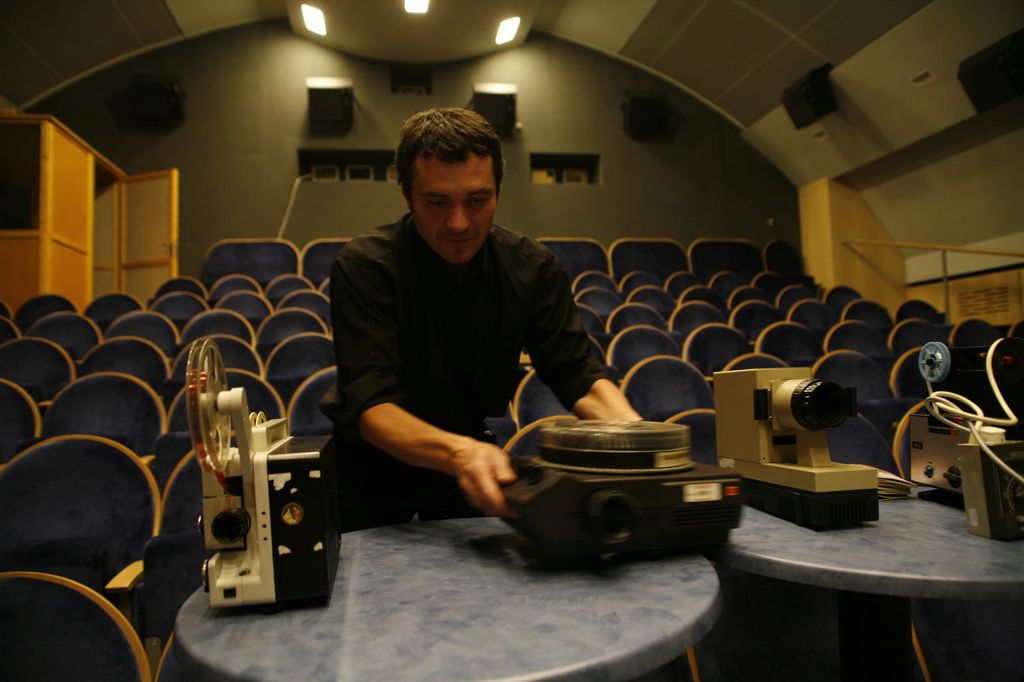
Martin Ježek at Ji.hlava IDFF 2011
Screening as a part of the creative process
In this case, the sound makes, again, almost a physical impression. Low tones, organ music. You also mix various sources: excerpts from a mass, spoken word, psalm verses…
Outdoors, you can hear the inherent sound of nature: thunder, rain, cows that go moo, crickets… But in the blackbox, meaning the screening hall, I wanted to evoke the atmosphere of a church. I use a multi-channel recorder. I place it on the floor in the middle of a church, and it covers the entire space. And if you mismatch the tracks by one phase, it all falls apart. I shifted the track only by a millisecond and obtained a natural echo that is not produced digitally, but still is physically present.
But the core of the soundtrack is Messiaen’s organ cycle, Les Corps Glorieux. The film features the whole composition in a disordered manner. I also employed old music pieces – for instance by Josef Seger.
Did you also edit the sound according to a certain formula? How does it correspond to the image editing scheme?
The basic sound editing principle is a triad. For example: Messiaen’s composition is played three times in a row. First, it is performed by Messiaen, then by his student, and finally by a student of his student. Messiaen’s recording from 1948 is played from an old record, the second recording is captured on a magnetic reel, and the final one is a CD recording – so you have three sources in one. I also used three versions of an organ improvisation by Josef Vodrážka employing the same theme, so that they “overlap”.
I processed the sound without having regard to the image, and since each screening hall has a different temperature, different electrical frequency, and the speed of the screening is different, perhaps even by several seconds, the synchronisation becomes useless.
In addition to shooting your films, you also show them to your audience. How many times have you seen The Way of the Cross?
Ten times in total, I guess. We’ve been showing it for the third year now. I find it important so see the first screening with my audience at the film’s premiere.
What’s on your mind during the screening?
Like many other experimental filmmakers, I consider screenings of my films to be a part of the creative process. Personally, I find it most important to see the film as a whole. Given my method of work, I can never see the final version of my films before their first public screening. And I get entirely immersed in the screenings of The Way of the Cross – because they are extraordinary encounters with my own work. I am a very sinful man and don’t seek redemption. But I want to corroborate that I attempted to come to terms with The Way of the Cross.
|
|
Martin JežekBorn in 1976 in Prostějov, lives in Prague. Majored in production and editing at FAMU. One of the most significant representatives of formal and conceptual film. Practically all of his works stem from highly formalized “scripts” and concepts that define the form of the film work prior to its creation. The creative process takes place uncontrollably within clearly defined limits. In addition to auteur films, he has applied this approach in several adaptations (Richard Weiner: The Voice on the Telephone; Věra Linhartová: A House Far Away) and since 2007 he has been creating so-called collective films (Second League, 2007; Monstrkoncert, 2008; and others). |
Translated by Bára Rozkošná



